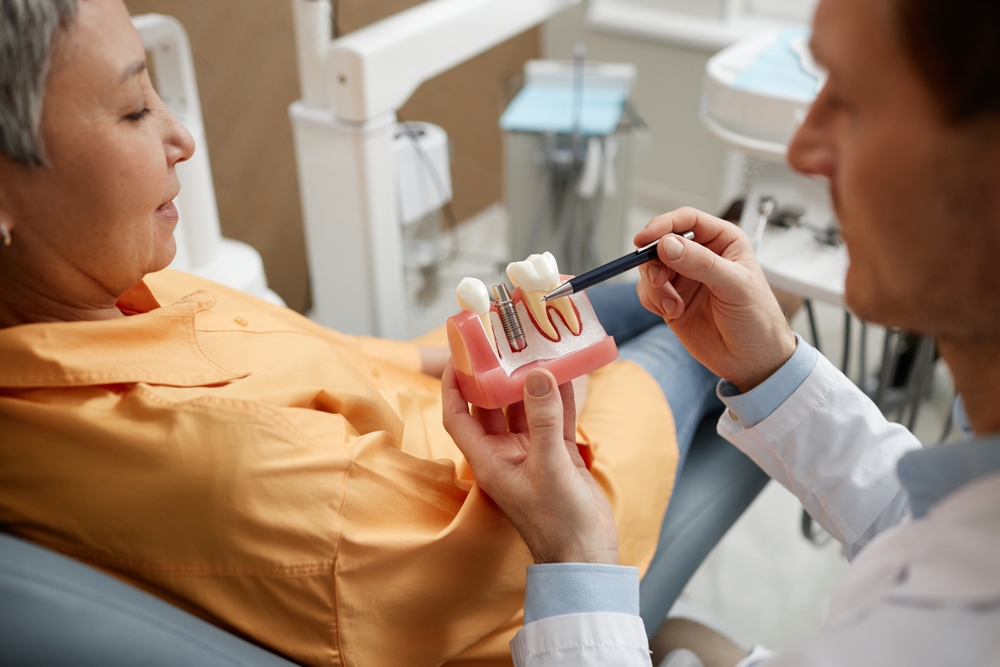Crowns ain’t Crowns

“Are all crowns equal?”
It’s a question worth pondering as you search for a dentist skilled in crown procedures—a service offered by nearly all dental practices. When it comes to crafting crowns, a variety of designs and materials are utilised, often with a preference for ALL CERAMIC techniques, particularly for front teeth, driven by aesthetic considerations..
The old-style tooth-coloured crown was typically a weak Feldspathic Porcelain fused to a metal inner fitting surface. That metal in most cases is and was an alloy of gold and some other precious and semiprecious alloys. The result is a rather opaque appearance because the greyish metal needs to be masked by an opaque layer of porcelain before the tooth-coloured porcelain is baked over the top for aesthetics.
With a totally opaque metal and porcelain layer on the inside, no light is refracted through the crown down into the root. The result is often a shadow over the root which is quite visible. 10-15 years down the track, when the gum has receded, as is a normal physiological reaction, the metallic margin is often visible or a dark, highly visible margin and area of colour change in the exposed root below the crown.
This is technically possible to cover with a full porcelain veneer at that point, but why use such a technique when an All-Ceramic crown material largely eliminates that problem.
A filling to cover the dark root is rarely a successful technique.
Not all Ceramic materials are translucent with some Zirconia fitting surfaces also being highly opaque. The use of EMAX (Lithium Disilicate) Porcelain largely eliminates all these visible margins after that 10-15 year period.
What about back teeth?
Unless we are talking about upper second molars and wisdom teeth, the teeth are still very visible. A more conservative and less invasive technique called a Biodome Crown is our usual choice for all back teeth.
Designed after the architectural principle behind some famous ancient buildings like St Pauls and St Peters Cathedrals, a biodome crown is incredibly strong and all forces applied to the teeth are compressive loads under which EMAX porcelain is amazingly durable, strong, and long-lasting.
This technique involves removal of far less natural tooth structure, so it is almost unheard of to hear a crown restored with a biodome crown lose its nerve vitality, so needing a root canal therapy caused by overly invasive crown preparation does not happen.
That is not to say that some teeth requiring crowns also may not require root canal treatments after the crown has been done. That is dependent on why the tooth required the crown in the first place.
The most common reason teeth require crowns include:
- The teeth that have already been root-filled, as a tooth with no internal vital nerve and blood supply is far more brittle than a living tooth and much more likely to fracture in a manner that is unrestorable.
- Cracks in the teeth caused by old amalgam fillings, very heavy grinding and clenching habits, and trauma to the tooth. Vertical cracks in teeth head in the direction of the pulp (the nerve inside the tooth) and, left long enough, allow bacteria to reach the nerve causing an abscess requiring root canal treatment.
- Cracks in teeth are like cracks in your windscreen. They never get smaller and continue getting worse over time, sometimes very quickly.
- Teeth that have lost 50% to 60% of their sound healthy tooth structure through decay, fracture, or large fillings.
The last three of these reasons can all lead to loss of the vitality of the nerve and potential abscess formation, whether or not the crown is done. Nevertheless, getting the crown done earlier than waiting to see if it gets any worse is far less likely to result in the need for root canal treatments.
The vast majority of crowns done do not require root canal treatment.
Behind the Technology of Crowns with Future Dental
At times we have to do more traditional crown designs when the tooth has already been very heavily filled, deeply decayed, or we are replacing an old traditional design crown. Otherwise Future Dental is possibly the first practice in Australia to have changed routinely to using Biodome design EMAX Crowns.
This technology was developed by Dr Graeme Milicich, a prominent New Zealand dentist who has lectured internationally for decades in conjunction with Dr J Tim Rainey of Texas Institute of Advanced Dental Studies, a highly reputed ultra-conservative American Dentist and international lecturer, and Professor Ray Bertolotti, one of the world’s best known international lecturers and minimally-invasive dental experts, all of whom are very well known to Dr Bob Gibbins.
Dr Gibbins collaborated with all of these renowned dentists on this technique for two years before Dr. Graeme Milicich introduced it to the dental profession at a major conference in the USA approximately 12 years ago, during which Dr Gibbins attended the same course to witness the worldwide unveiling of this technique by his friend Graeme.
Since then, Dr. Gibbins has instructed numerous dentists in this technique, incorporating chapters into his dental textbook, which was authored and released three years ago; this technique represents a significant advancement in crown design, with Dr. Gibbins having placed several thousand of these crowns over the past 14 years.
Our crowns are completely made in-house with digital scanning in place of old-style impressions, are designed by CADCAM computer design, milled in-house, and typically are completed and ready to bond them onto the tooth the same day.
Crowns ain’t Crowns.


